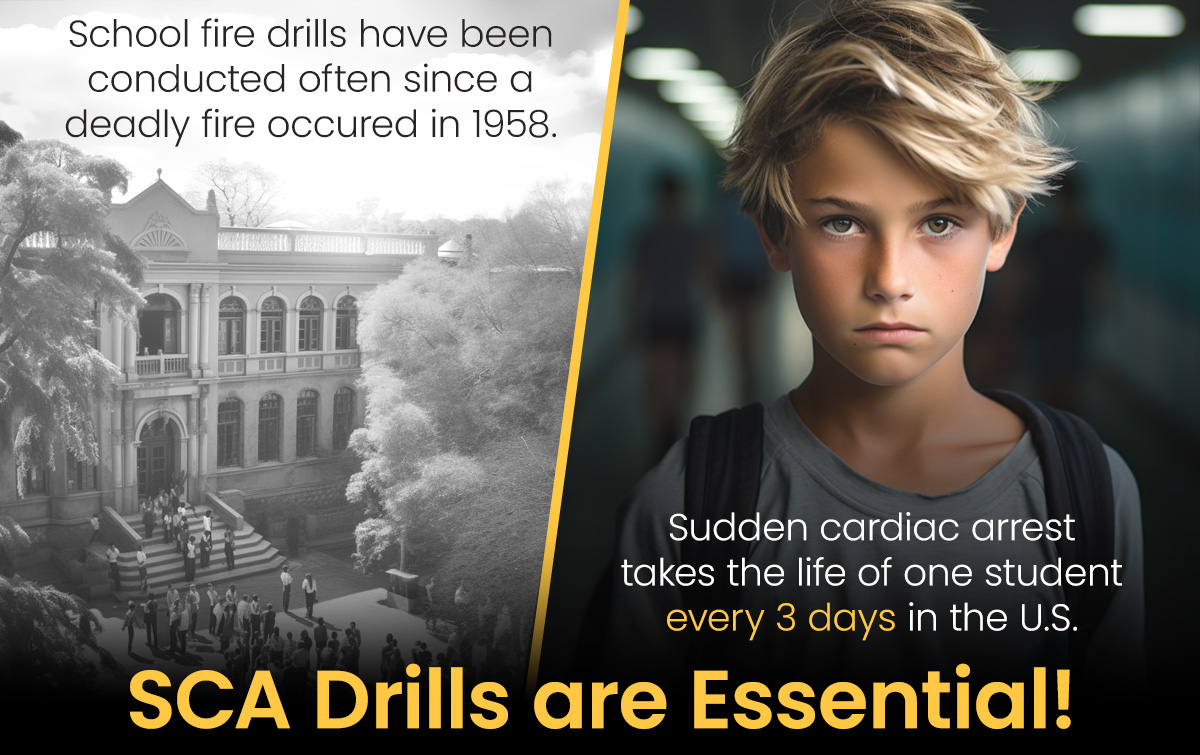The Case for Sudden Cardiac Arrest Drills
September 15, 2023

Growing up, we have all experienced a fire drill in school. The fire alarm goes off, your teacher ushers you outside, a certain distance away from the school, and you wait there, until the drill is over and you can go back inside. It is important to be prepared for any type of emergency, but deadly fires at school are rare.
Sudden cardiac arrest takes the life of one student every three days in the United States. This is why we need to be adequately prepared for a sudden cardiac arrest emergency in our schools. It is not a question of if sudden cardiac arrest will happen, it is a question of when it will happen.
How to Prepare
Being prepared for a sudden cardiac arrest emergency requires a few steps:
- Having AEDS within 3 minutes of all locations
- Developing an Emergency Action Plan
- Maintaining your AED
- Training School Staff & Personnel
- Conducting Drills for your Cardiac Emergency Response Team
Although providing training and certification for the staff is important, it is NOT enough. A sudden cardiac arrest is a high stress emergency situation. Most certifications last for two years. It is important the information provided during the training session stays fresh in people’s minds so they are able to effectively respond when sudden cardiac arrest strikes.
Emergency Actions Plans
Additionally, the Emergency Action Plan is not something that is practiced during CPR & AED Training. It is important that this plan is drilled frequently so everyone understands their roles and responsibilities when an emergency occurs. This drill should be done twice annually, if not more.
Drills are a great way to ensure your emergency action plan works and also a great way to improve communication between the school staff and the local EMS system. Project ADAM provides great resources on creating a heart safe school.
They break down the drills into three parts:
- Planning Your Drill
- Who does the drill involve?
- Site Coordinator
- Cardiac Emergency Response Team
- School Staff
- Observer
- What do you need?
- AED Trainer
- Manikin
- Cell Phone
- Drill Checklist
- When should the drill happen?
- Don’t tell the team exactly when the drill will happen.
- Ensure to tell all those involved that it is just a drill.
- Where should it happen?
- Anywhere on the school campus
- Ensure to notify students that is just a drill
- The Day of Your Drill
- Respond to a student (manikin) collapse
- Communicate Emergency using Code Word and Location
- Allow Cardiac Emergency Response Team to perform emergency action plan duties
- Notify EMS
- Provide CPR
- Get the AED
- Use the AED
- The Post Drill
- Summarize what went well
- Determine what improvements need to be made
Here is a great video resource from Project ADAM about how to conduct a drill in your school.
Time is of the Essence
Sudden cardiac arrest takes too many young lives each year. It is a very time-sensitive emergency. The quicker adequate care is provided with CPR and the use of an AED, the higher the chances are of survival. The best way to help save a life is to be prepared. By conducting drills with the Cardiac Emergency Response team, you are ensuring your team is prepared to act quickly and effectively when sudden cardiac arrest strikes.
To learn more about Defibtech and to join us on our quest to save lives from sudden cardiac arrest, visit www.Defibtech.com.
